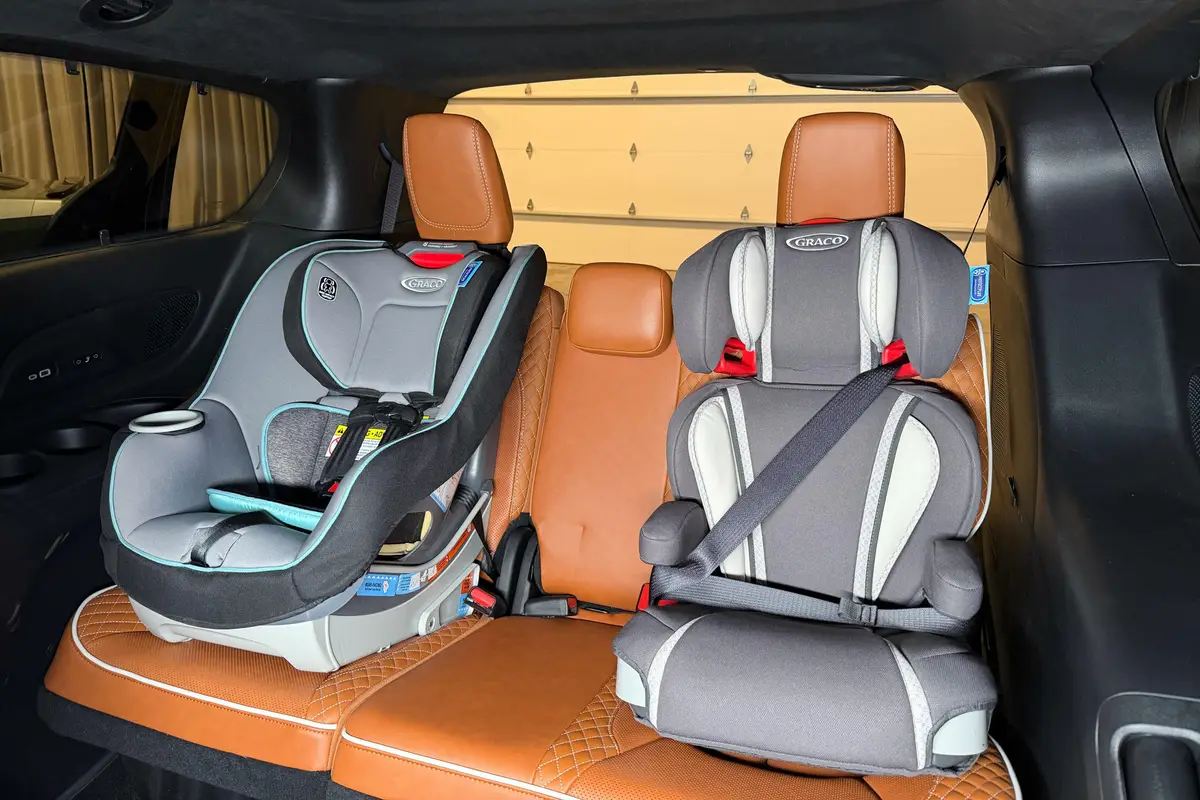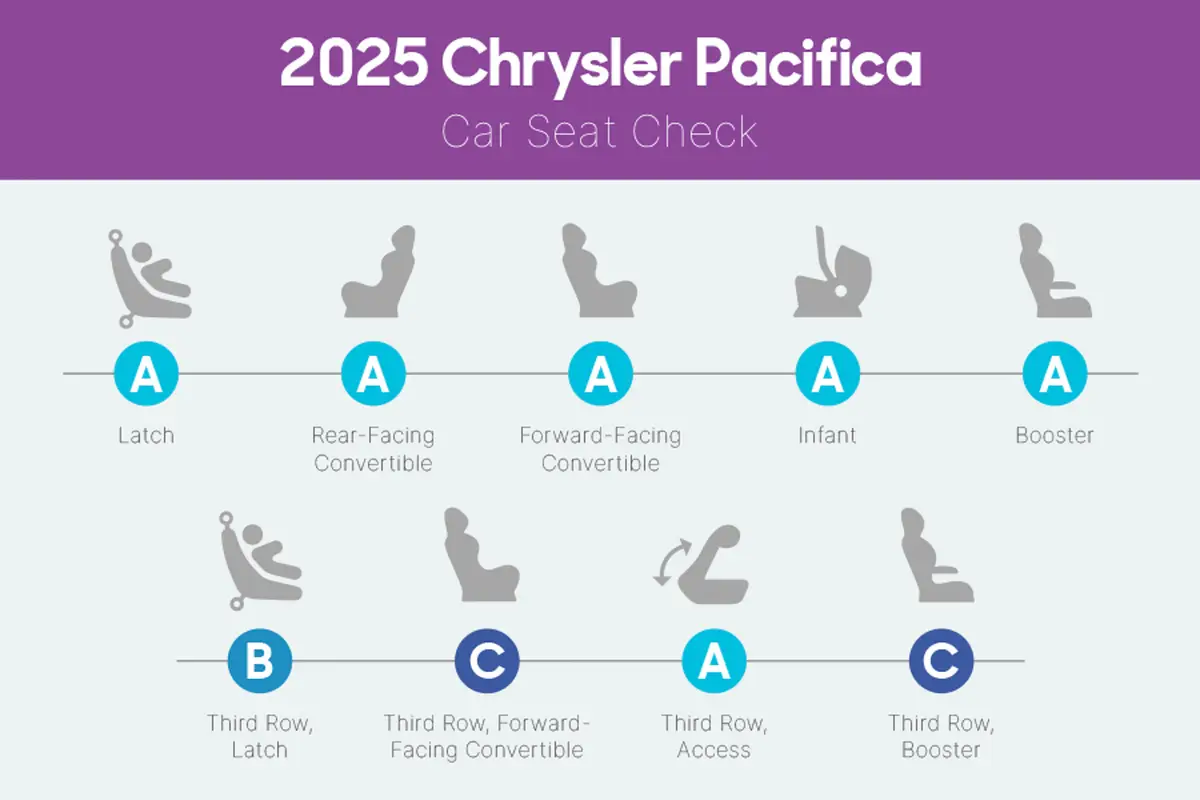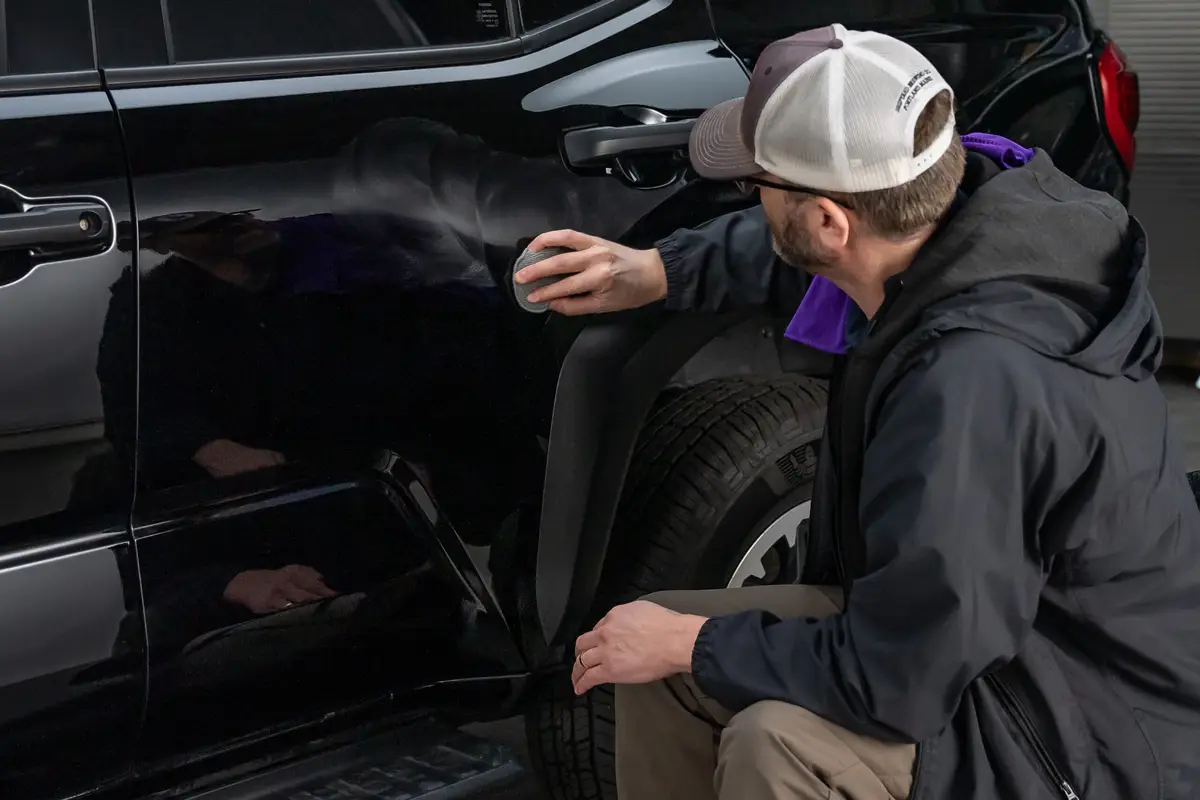How Do Car Seats Fit in a 2025 Chrysler Pacifica?


Key Points
- The second row of the 2025 Chrysler Pacifica minivan performed very well in our Car Seat Check thanks to accessible anchors and ample legroom.
- The third row’s fixed outer head restraints caused it to earn lower grades.
- We tested the gas version of the top Pinnacle trim with second-row captain’s chairs and seating for seven; the Pacifica also comes as a plug-in hybrid. Note that the seats in the Pinnacle trim do not stow into the floor, unlike in other gas trims.
- The minivan does not fit three car seats in its second row because of the captain’s chair seat configuration.
Take a look at how the Latch system and each car seat scored below in our Car Seat Check of the 2025 Chrysler Pacifica.
Related: Search Car Seat Checks

Latch: Grade A
The two sets of lower anchors in the second row are easily accessible. The two top tether anchors sit near the base of the seatback and are also easy to find and use.
Infant Seat: Grade A
This seat was easy to install in the second row, and our 5-foot-6-inch front passenger had plenty of legroom with the seat installed behind them.
Rear-Facing Convertible: Grade A
As with the infant seat, the rear-facing convertible was easy to install, and the front passenger had no legroom issues.
Forward-Facing Convertible: Grade A
Connection to both the lower anchors and top tether anchor was easy, and the seat fit well. We removed the head restraint to situate the convertible flush against the seatback.
Booster: Grade A
In the second row, the booster fit well after removing the head restraint to situate the car seat flush on the seatback. The Pacifica’s stable buckles are fixed to the side of each captain’s chair and should be easy for kids to use independently.

Third-Row Access: Grade A
A lever on the side of the captain’s chairs folds the seatback forward; the seat can then be slid forward for third-row access. The step-in height is manageable, and the opening is large enough. Passengers can also use the pass-through between the second-row seats to access the third row, which is wide enough for adults.
Third-Row Latch: Grade B
There are two sets of anchors in the third row, and they require a little maneuvering to connect. Note that the placement of the anchors is odd, with one set on the passenger side and one set that spans the middle seat and the driver-side seat. Two top tether anchors sit on the third-row seatback; they’re not clearly marked but are easy to find.
Third-Row Forward-Facing Convertible: Grade C
Though the third row’s middle head restraint is adjustable, the third row’s outer head restraints are fixed, and this pushed the convertible off the seatback. Installation with lower anchors was merely OK and again required some work. Connection to the top tether anchor was easy, however.
Third-Row Booster: Grade C
In the third row, we again had a problem with the fixed head restraint pushing the booster off the seatback. The third row’s floppy buckles will likely be tough for kids to grasp.
Grading Scale
A: Plenty of room for the car seat and the child; doesn’t impact driver or front-passenger legroom. Easy to find and connect to Latch and tether anchors. No fit issues involving head restraint or seat contouring. Easy access to the third row.
B: One room, fit or connection issue. Some problems accessing the third row when available.
C: Marginal room plus one fit or connection issue. Difficult to access the third row when available.
D: Insufficient room, plus multiple fit or connection issues.
F: Does not fit or is unsafe.
About Cars.com’s Car Seat Checks
Editors Jennifer Geiger and Jennifer Newman are certified child safety seat installation technicians.
For the Car Seat Check, we use a Chicco KeyFit 30 infant-safety seat, a Graco Contender 65 convertible seat and Graco TurboBooster seat. The front seats are adjusted for a 6-foot driver and a shorter passenger. The three child seats are installed in the second row. The booster seat sits behind the driver’s seat, and the infant and convertible seats are installed behind the front passenger seat.
We also install the forward-facing convertible in the second row’s middle seat with the booster and infant seat in the outboard seats to see if three car seats will fit; a child sitting in the booster seat must be able to reach the seat belt buckle. If there’s a third row, we install the booster seat and a forward-facing convertible. Learn more about how we conduct our Car Seat Checks.
Parents should also remember that they can use the Latch system or a seat belt to install a car seat, and that Latch anchors have a weight limit of 65 pounds, including the weight of the child and the weight of the seat itself.
Cars.com’s Editorial department is your source for automotive news and reviews. In line with Cars.com’s long-standing ethics policy, editors and reviewers don’t accept gifts or free trips from automakers. The Editorial department is independent of Cars.com’s advertising, sales and sponsored content departments.

News Editor Jennifer Geiger joined the automotive industry in 2003, much to the delight of her Corvette-obsessed dad. Jennifer is an expert reviewer, certified car-seat technician and mom of three. She wears a lot of hats — many of them while driving a minivan.
Featured stories




2026 Nissan Sentra Review: Long Live the Sedan

